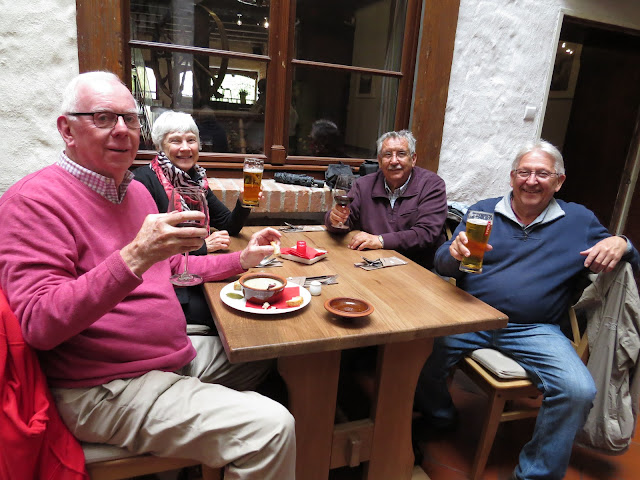The whole day today was spent touring the beautiful city of Gdansk in northern Poland.
Founded along the shores of the Baltic sea in the 10th century, the city has been site of many battles and come under the control of many ruling factions throughout its' history. However the era that holds the most interest for me is the 20th century. Several factors pique my interest here, not the least of which is my dad would have boarded a ship in the city's port, for his passage to Canada.
The shot below shows a plaque describing some of the history of the port. I include it here because the large 3 stack ship in it, puts me in mind of the ship dad would have been on for his Atlantic crossing to Halifax and ultimately, Montreal.
Another reason for my interest is, it was here on the Westerplatte Peninsula of Gdansk, that the first shots of WWII were fired on September 1, 1939 as the Germans attacked a Polish military depot located here.
A communications tower of the military depot is shown below with the memorial monument shown in the following photo.
Shortly after the start of the war, the city was annexed by and under the control of Germany until March of 1945 when the Russian armies invaded and virtually destroyed the city.
The crumbling walls in the photo below are remnants of the Russian invasion and their apparent wanton destruction of the city.
After the war, Gdansk and Poland as a whole came under the control of a Soviet backed communist regime. That lasted until Lech Walesa and the Solidarity movement (which began at the Gdansk ship yards in 1980), were finally able to bear enough pressure on the government to call a general election which brought an end to communism and established a democratic government in 1989.
Of course dad followed the news of the peoples uprising eagerly, but unfortunately never got to see the day democracy was established in his homeland.
Poland was the first of the "Soviet Block" countries to gain it's freedom and the fall of the Berlin Wall came a few months later.
The Gdansk ship yards were the site of most of the demonstrations and strikes that resulted in the fall of Russian lead rule. The museum and memorial to that movement is seen in the shots below.
After focusing on the struggles of Gdansk, we spend the rest of the day enjoying the sunny but cool weather by exploring the "old town" and it's shops, patios and historical sites.
 |
One of the main streets full of shops and restaurants
|
 |
| I'll call this "amber lane" as the walkway is littered with shops selling amber based jewelry |
 |
Despite the sun, it's a cool day so we find a sunny patio and warm up with a hot beverage.
It's coffee... that's our story and we're sticking to it. |
 |
| A beautiful view through the "Golden Gate" where the kings of the past, entered the city |
 |
| We just happened upon a demonstration put on by the emergency responders of the city |
Another early start tomorrow for the trip to Warsaw.





















































